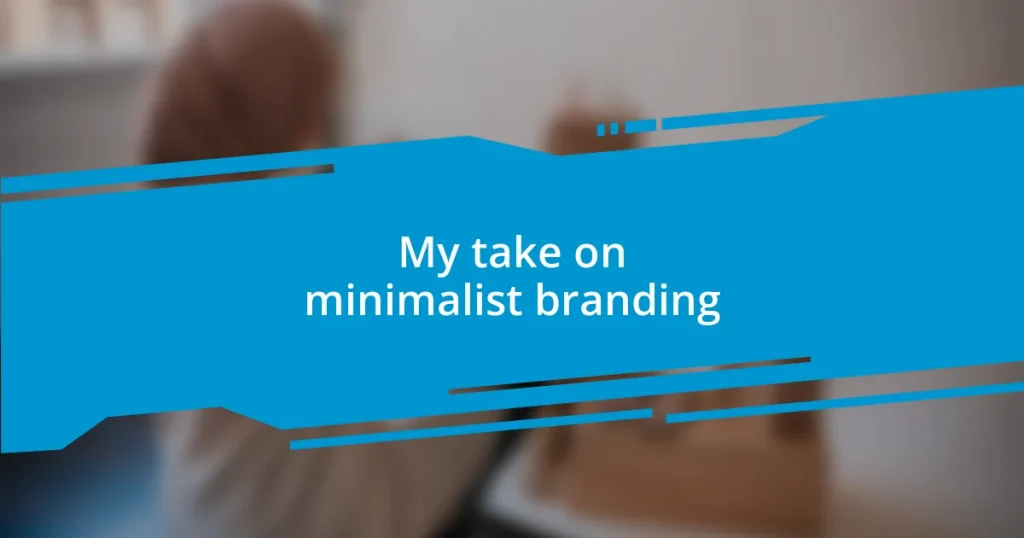Key takeaways:
- Minimalist branding emphasizes clarity and focus, simplifying messaging to effectively connect with consumers and fostering authenticity.
- Key principles include the strategic use of whitespace, limiting color palettes, and ensuring consistency across all brand touchpoints.
- Successful minimalist brands like Apple, Muji, and Airbnb exemplify how simplicity enhances user experience, emotional connection, and community engagement.
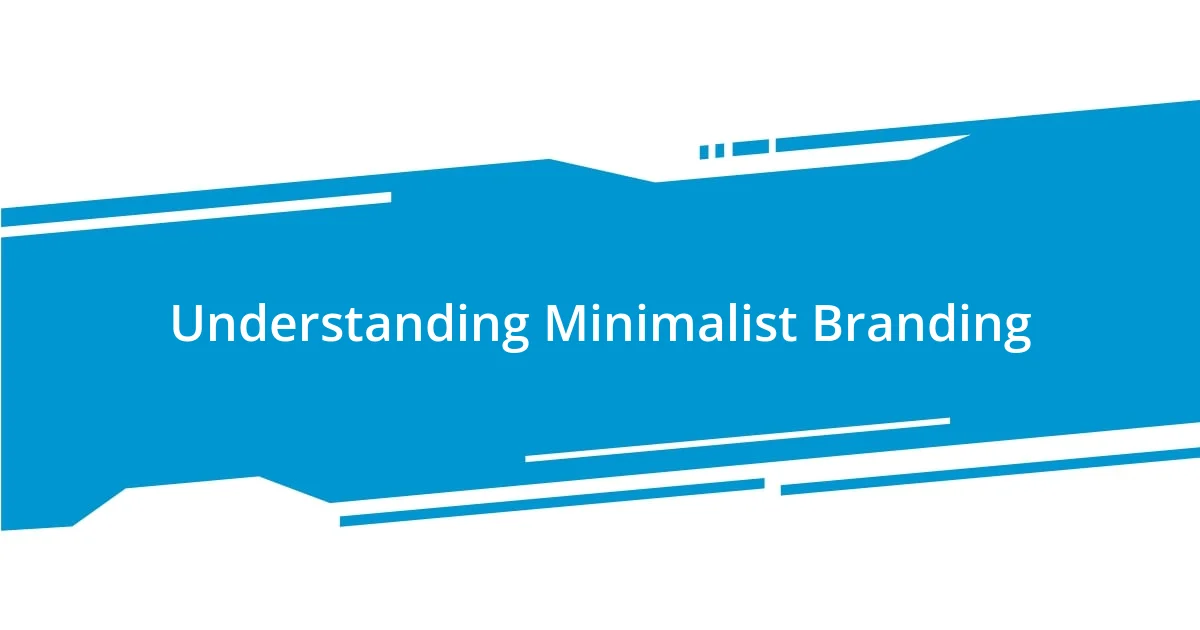
Understanding Minimalist Branding
Minimalist branding, at its core, is about stripping away the unnecessary to reveal what truly matters. I remember when I first came across this concept; it felt like a breath of fresh air amidst the clutter of overly complex designs. It made me wonder—how often do we overcomplicate our messaging, losing sight of our true identity?
When I think about minimalist branding, I envision a stark contrast to the chaos of modern marketing. There’s an emotional clarity that comes with simplicity, allowing brands to communicate their essence more effectively. Have you ever felt overwhelmed by choices? Minimalist branding cuts through that noise, offering a clear path and a focused message that resonates with consumers on a deeper level.
Moreover, minimalist branding isn’t just about the visual aspect; it embodies an entire philosophy. I often find myself reflecting on how this approach can foster authenticity. When brands choose to embrace minimalism, they open a dialogue that feels genuine, almost like a conversation with a good friend—aren’t those the connections we crave?
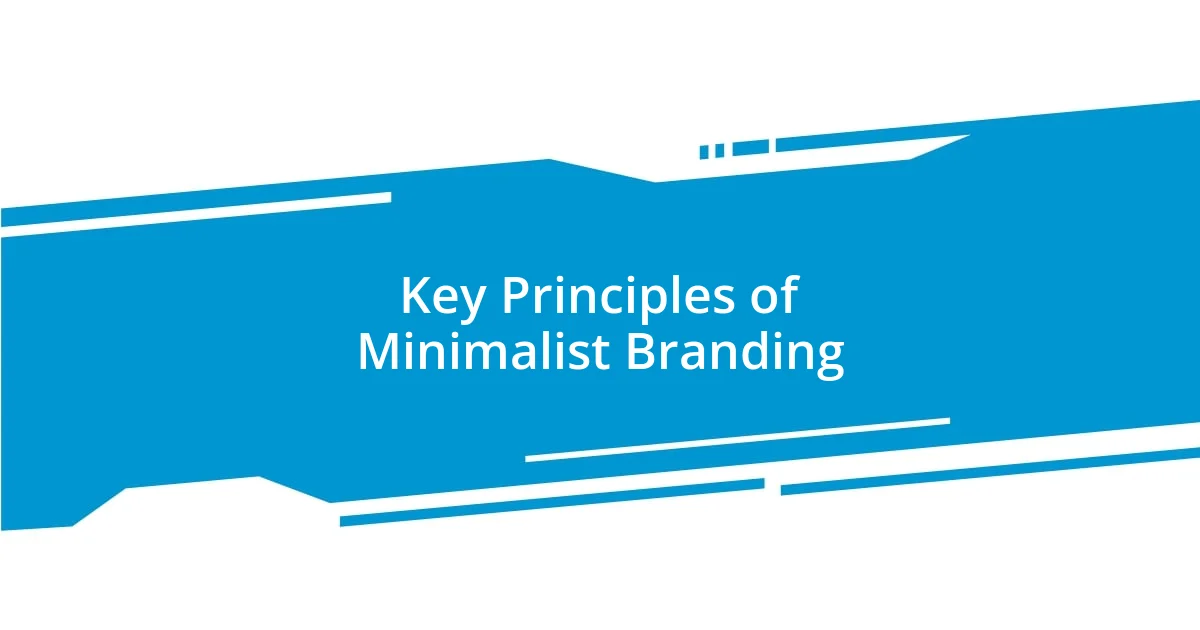
Key Principles of Minimalist Branding
Minimalist branding hinges on clarity and focus. In my experience, a well-defined message often translates into a more memorable brand identity. I recall working with a client who had a jumbled range of services but chose to simplify their offerings into three core areas. The shift not only clarified their mission but also attracted a more targeted audience, showing just how impactful minimalism can be.
Another key principle is the strategic use of space and typography. Minimalist design often utilizes ample white space to highlight essential elements, creating a sense of calm and order. I remember being drawn to a brand’s website that embraced generous spacing around its content. It felt inviting and made it easier for me to navigate their offerings, demonstrating how effective design can enhance user experience.
Finally, consistency is crucial in minimalistic branding. From logo designs to social media presence, maintaining a uniform aesthetic fosters trust and recognition. Reflecting on my own branding journey, I’ve learned that a cohesive style not only strengthens my identity but also ensures that audiences can easily connect the dots between different platforms and materials. This principle underscores why less truly can be more in the world of branding.
| Principle | Description |
|---|---|
| Clarity and Focus | Defining a core message and offering to resonate with the audience. |
| Use of Space and Typography | Utilizing white space to create a calm and inviting design. |
| Consistency | Maintaining a uniform aesthetic across all brand touchpoints. |
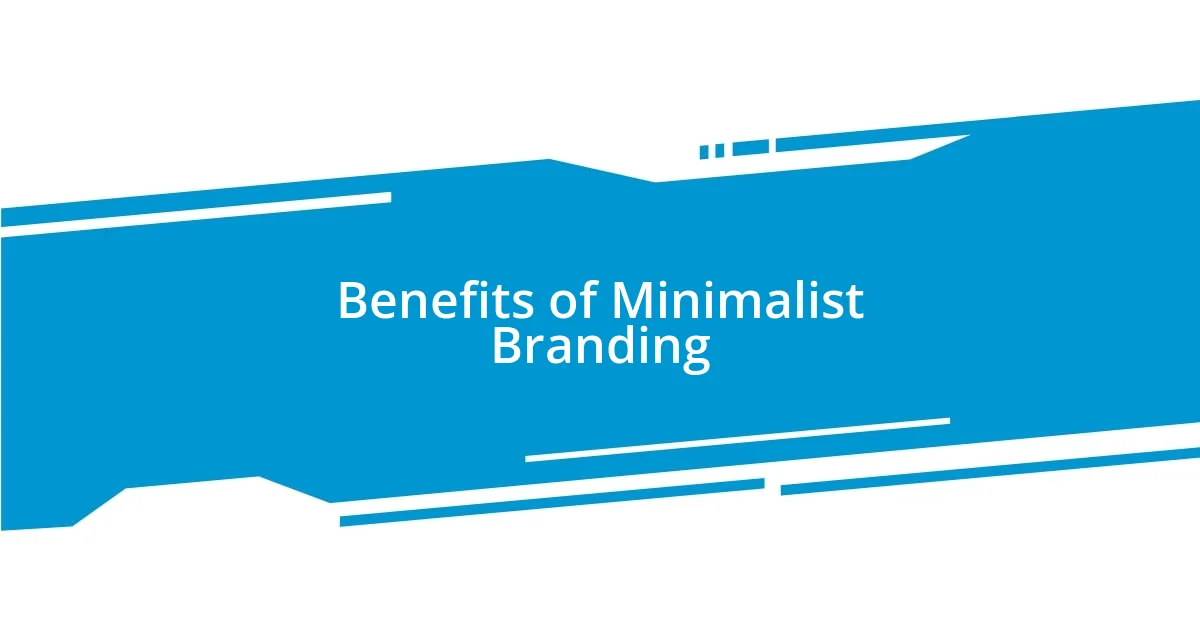
Benefits of Minimalist Branding
Embracing minimalist branding presents a wealth of benefits that can transform how a brand interacts with its audience. I’ve found that simplicity breeds clarity—when a brand’s message is straightforward, it resonates. For instance, a friend of mine launched a minimalist skincare line that focused solely on natural ingredients. By reducing the clutter of flashy marketing and excessive product lines, she was able to foster a strong connection with customers who appreciated the honesty and straightforwardness of her approach.
Benefits of Minimalist Branding:
-
Enhanced Recognizability: A clean, simple logo or design sticks in people’s minds, making it easier for them to remember the brand.
-
Stronger Emotional Connection: People are drawn to authenticity. Minimalist branding often exudes honesty, creating trust with consumers.
-
Efficient Communication: By trimming excess messaging, brands convey their core values and offerings more effectively, reducing confusion.
-
Cost-Effective Marketing: Fewer elements in design can lead to lower production costs, streamlining both the creation and marketing processes.
In my journey, I’ve noticed that brands that embrace minimalism often enjoy increased customer loyalty. Think about it: a brand that communicates simply and effectively invites customers into a relationship rather than just a transaction. When I backed a minimalist bookshop focused solely on curated titles, I felt a sense of community that was refreshing—it wasn’t just about selling books; it was about sharing stories and experiences. That is the power of minimalism—it transforms branding into a meaningful dialogue.
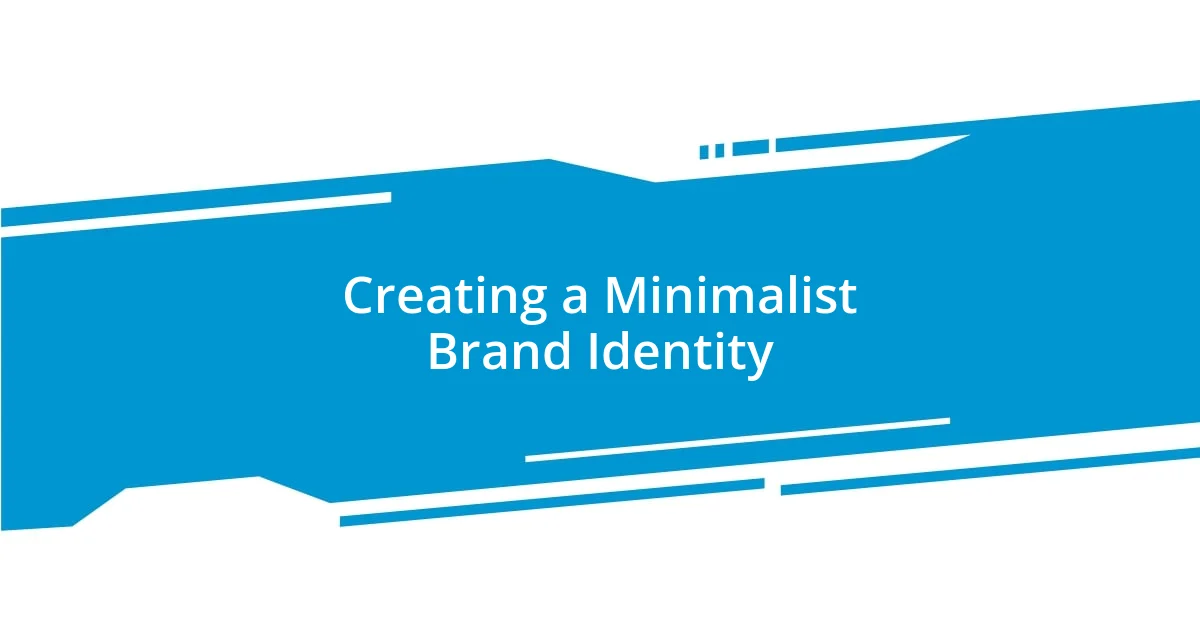
Creating a Minimalist Brand Identity
Creating a minimalist brand identity starts with understanding what truly matters to your audience. I once consulted for a startup overwhelmed with options for their product lines; it struck me how creating a streamlined range not only clarified their branding but also connected them deeply with customers. Have you ever walked into a store and felt overwhelmed by choices? I believe simplicity can act as a guiding light in that clutter.
In my experience, the right color palette plays a significant role in establishing a brand’s identity. When I worked on a project for a wellness brand, we opted for soft, muted tones that conveyed serenity and trust. I recall receiving feedback from users who felt immediately at ease just by looking at the brand’s visual elements. Color, I’ve learned, has the power to evoke emotions—what feeling do you want your brand to elicit?
Moreover, don’t underestimate the importance of storytelling within a minimalist framework. By weaving a simple yet compelling narrative, you breathe life into your brand, making it relatable. I remember how a friend turned her love for travel into a minimalist luggage brand. With a backstory that resonated with wanderlust, she attracted customers who identified not just with the product, but with the adventure it represented. So, what story does your brand have to tell?
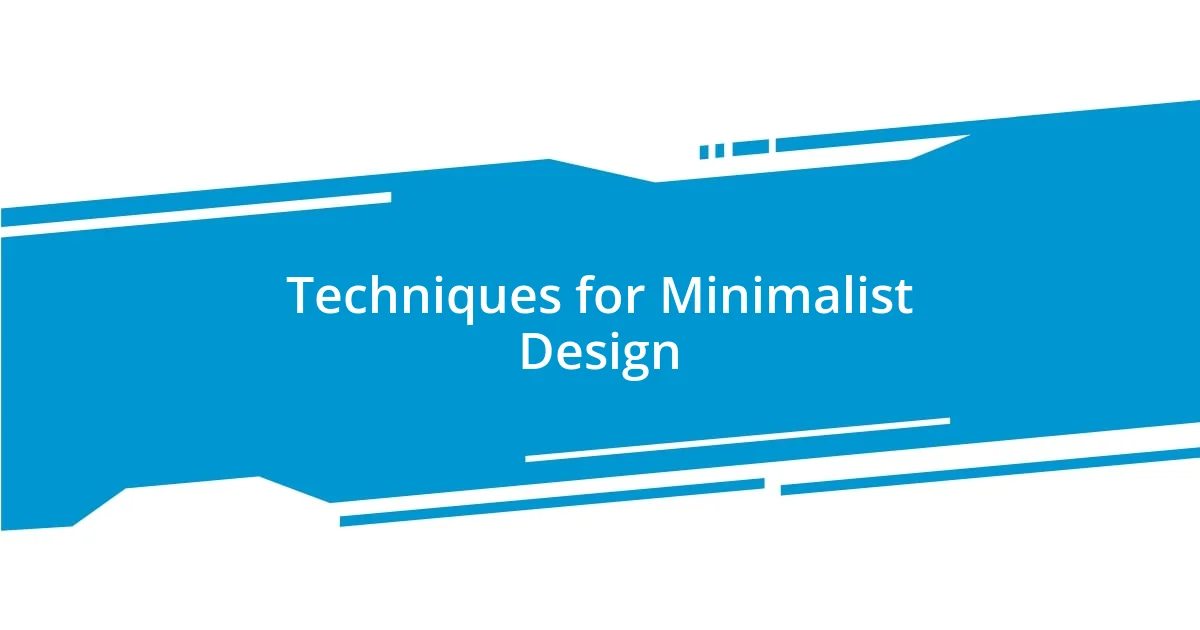
Techniques for Minimalist Design
When it comes to minimalist design, one effective technique is the strategic use of whitespace. I remember redesigning a website for a local gallery where we consciously left significant areas without any content. The result? A refreshing visual experience that allowed visitors to focus on the artwork. It taught me how whitespace can enhance elements rather than detract from them, inviting the audience to engage without distractions.
Another technique that I find invaluable is limiting the color palette. In my personal projects, I’ve experimented with just two or three colors, and the simplicity was striking. For example, while working with a coffee shop brand, we settled on earthy tones that echoed its organic ethos. This not only made the brand instantly recognizable but also created a calm and inviting atmosphere that customers loved. Have you ever noticed how a limited palette can convey a brand’s essence effortlessly?
Lastly, typography plays a vital role in minimalist design. Choosing clean and legible fonts can significantly impact a brand’s communication. I once advised a tech startup to shift from a cluttered selection of fonts to a single, modern typeface. It streamlined their message and gave their digital presence a sharp edge. Typography, in my experience, isn’t just about readability; it’s about crafting a personality that aligns with your brand’s values. What does your brand’s typography say about you?

Case Studies of Successful Brands
One striking example of minimalist branding is Apple. Their signature clean design and clear messaging convey innovation and simplicity. I remember unboxing my first iPhone; the experience felt special, almost ceremonial, as if I was holding something extraordinary. Have you ever noticed how Apple’s products rarely have excess features? They focus on user experience, stripping away the unnecessary, which makes their brand resonate deeply with millions.
Another compelling case is Muji, the Japanese retail company known for its no-brand philosophy. I visited a Muji store once and was amazed by how every product, from stationery to household items, emphasized functionality without flashy branding. The experience felt serene and refreshing, allowing customers to appreciate the beauty of simplicity. It makes me wonder, wouldn’t it be nice if more brands focused on substance over style?
Lastly, consider Airbnb, which has effectively used minimalist branding to create a sense of belonging. I fondly recall booking my first stay through their platform, drawn in by their straight-to-the-point visuals and approachable narrative. Their brand identity, stripped down to essential emotions, connects hosts and travelers in a way that’s both inviting and familiar. Have you felt that warmth when searching for your next adventure? Minimalism, in their case, isn’t just a design choice—it’s a bridge to human connection.
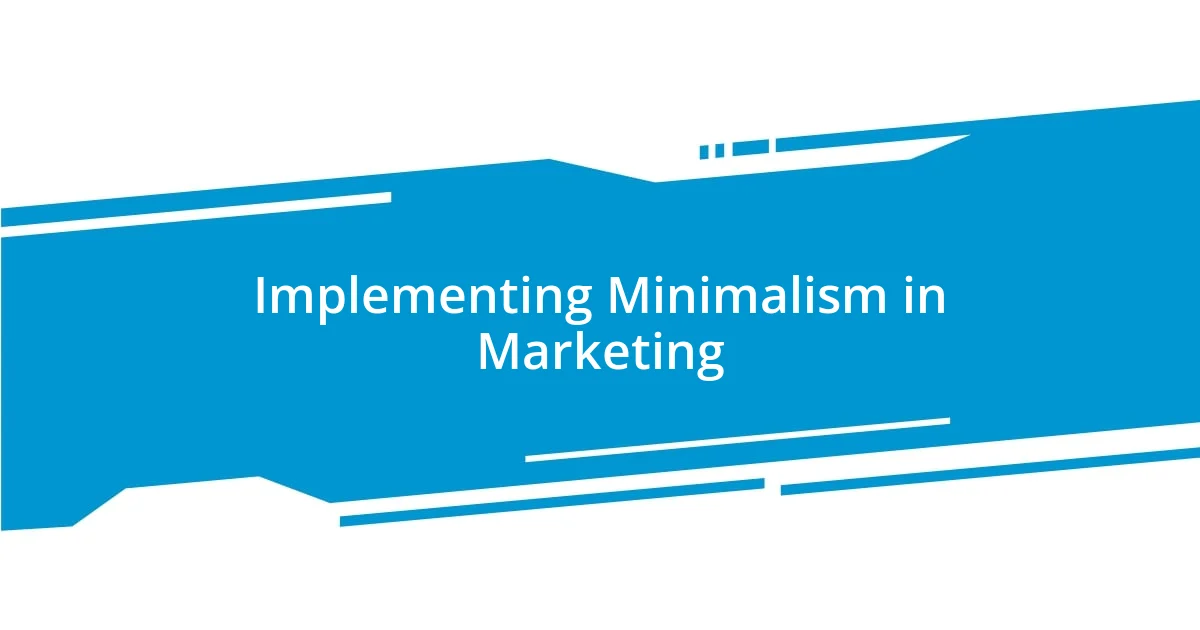
Implementing Minimalism in Marketing
Implementing minimalism in marketing is all about clarity and focus. Recently, while revamping a social media campaign for a boutique, we decided to limit our posts to just a few key visuals that captured the essence of the brand. The response was overwhelming; people resonated more with less. Isn’t it fascinating how cutting out the noise can actually amplify the message?
Another aspect I’ve found crucial is the power of concise messaging. In one project for a startup, I recommended simplifying their tagline to a single, impactful phrase. This shift resulted in higher engagement rates. Often, I wonder how many brands miss the mark by overcomplicating their communication. What if a single sentence could tell your entire story?
Lastly, aligning minimalism with storytelling can create a powerful marketing strategy. I once worked on a campaign that used minimalist visuals paired with a compelling narrative. This approach not only captivated audiences but also deepened their emotional connection with the brand. It made me appreciate that sometimes, the simplest stories can leave the most profound impact. How does your brand’s story unfold?










